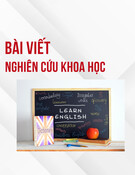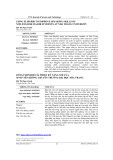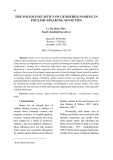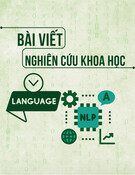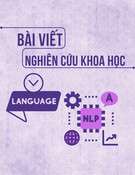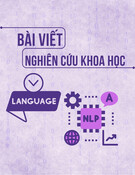
TẠP CHÍ KHOA HỌC - ĐẠI HỌC ĐỒNG NAI, SỐ 31 - 2024 ISSN 2354-1482
1
AN INVESTIGATION INTO COMMON METHODS OF
TEACHING ENGLISH SPEAKING SKILL TO NINTH-GRADERS
AT THANH PHU JUNIOR HIGH SCHOOL
Nguyen Thi Loan
Faculty of Foreign Languages, Dong Nai Technology University, Bien Hoa City,
Dong Nai Province, Viet Nam
Email: nguyenthiloan@dntu.edu.vn
(Received: 9/01/2024, Revised: 11/03/2024, Accepted for publication: 21/6/2024)
ABSTRACT
Learning English is becoming increasingly important in the era of
industrialization and modernization. Even though speaking is considered the most
necessary skill and has been extensively studied, methods for training this skill have
not been given special attention, particularly in the Vietnamese context. This study,
therefore, aimed to investigate common speaking-teaching methods EFL teachers at
Thanh Phu Junior High School in Vinh Cuu District were deploying to teach
speaking skills to ninth-graders in their current speaking classes. Twenty English
teachers from this school participated in the questionnaire survey while five of them
were randomly chosen for the further interview process. The findings uncovered that
teacher participants used three typical methods when teaching speaking skills to
ninth-graders, namely, the grammar-translation method, audio-lingual method, and
communicative language teaching. Noticeably, the audio-lingual method and CLT
are still dominant methods for teaching speaking skills. On the basis of their
findings, the researchers suggested some recommendations for EFL teachers at
Thanh Phu Junior High School to better perform their teaching skills in the future.
Keywords: Speaking skill, ninth-graders, teaching methods
1. Introduction
1.1. Background to the study
Nowadays, English is definitely a
commonly used language in all areas of
life such as study, business or
entertainment, etc. It is used as a
common language for regional
cooperation within the Association of
Southeast Asian Nations, especially in
Southeast Asia (Nobuyuki, 2011). It
maintains a leading position in
industrialization, country modernization
and global integration even in Vietnam
(Dang & Nguyen, 2019).
In fact, none of this is possible
without adequate English proficiency.
According to Ur (1996), among the four
skills in English, speaking skill is
considered the most important ones, but
in Vietnam, although English is
officially taught in the formal education
system and English centers; many
foreign language learners, especially the
ninth-graders always have difficulty
finding suitable foreign language
learning methods to adapt to a learning
environment that needs to improve the
target language. Many speaking skills
training techniques have been used to
help EFL teachers and ninth-graders
achieve their goals.
Notably, the researcher found that
EFL teachers and ninth-graders are
having difficulty finding effective ways








